Tour de France and the selfie
- Published
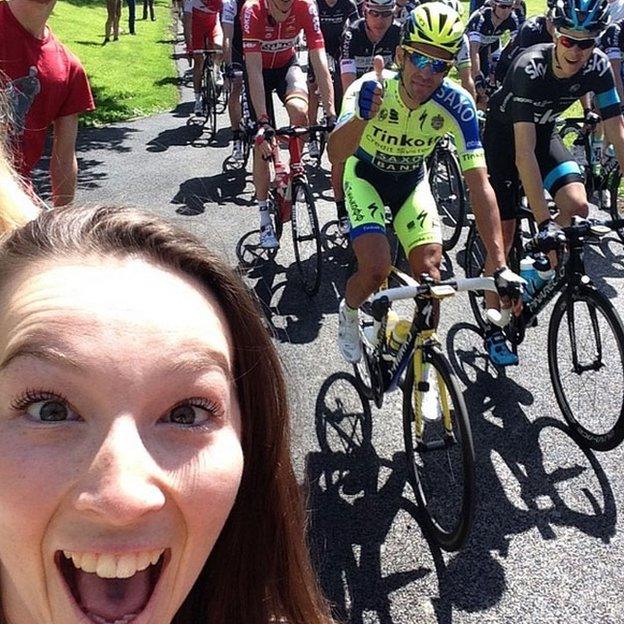
Katie Holroyde took this selfie of the two Tour de France favourites from the side of the road
For fans of any sport, close to the action is where you want to be. Why watch from a distance when you can reach out and touch your sporting hero?
For some events, that's not practical - but in others, there has always been a desire to get close, one being the Tour de France.
The current Tour, which began in Yorkshire, has seen millions coming out to cheer on the riders, but those in the saddle are less happy with some who attempt to take selfies as the riders approach.
Geraint Thomas said he had had to avoid fans stepping into the road to take pictures of themselves during the opening two stages of the race.
"For sure, it was a bit dodgy at times," he said.
"The worst thing is when people have got their back to the peloton taking selfies. There were a few. They don't see us coming, they're stood in the road and it's dodgy."
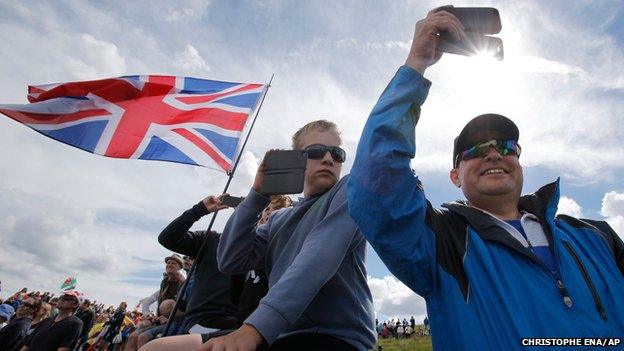
Spectators line the road during the second stage of the race
It's an interesting twist, in that photographers, pro or amateur, will be looking for the best angle to get a shot of the race, and not for a self-portrait.
The temptation for them to get close is of course there - but usually they will have lenses capable of taking pictures from a longer distance and, if using wide-angle lenses, some understanding of perspective when working close.
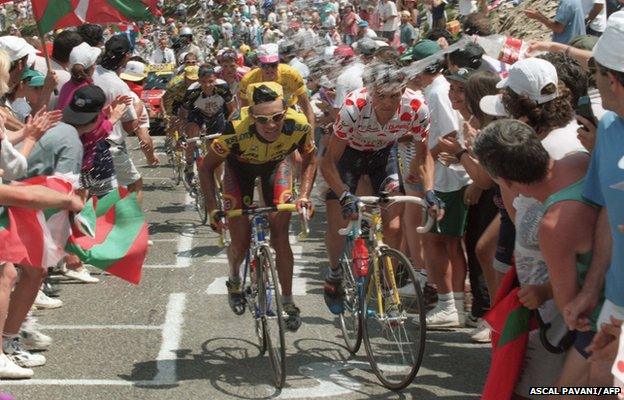
The crowd presses in close during the Port de Larrau Pass climb way back in 1996
The sight of the crowd parting as the peloton of the Tour approaches has been common for years. Yet the desire to be in the photo to promote one's own moment at the event is now commonplace, something unthinkable before the dawn of the mobile-phone camera.
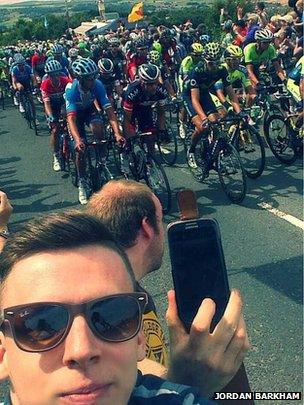
Selfie by Jordan Barkham
Indeed it seems, for some, the very act of attending an event is driven by the need to take a selfie to promote on social media. For the more youthful among us it is just a way of life, something they have always done.
But whatever the motive, most selfies require you to turn your back on the subject and in this case that can cause an issue. It is best to stay safely to one side out of the way, and if you can practise the selfie before the riders arrive, that way, you'll get the shot without risking yours or anyone else's safety. Let's face it, a shot of you grinning with a few riders in the background is not worth getting hurt for.
American Tejay van Garderen, of BMC Racing, said on Twitter: "A dangerous mix of vanity and stupidity. Standing [in] the middle of the road with you[r] back turned while 200 cyclists come at you, just to take a selfie. #think #TDF2014. That being said, I love the crowds and thank you for your support. But please give us room."
It's also worth remembering of course, the selfie may well not tell the whole truth, with it giving the impression that the photographer is closer to the action than they were.
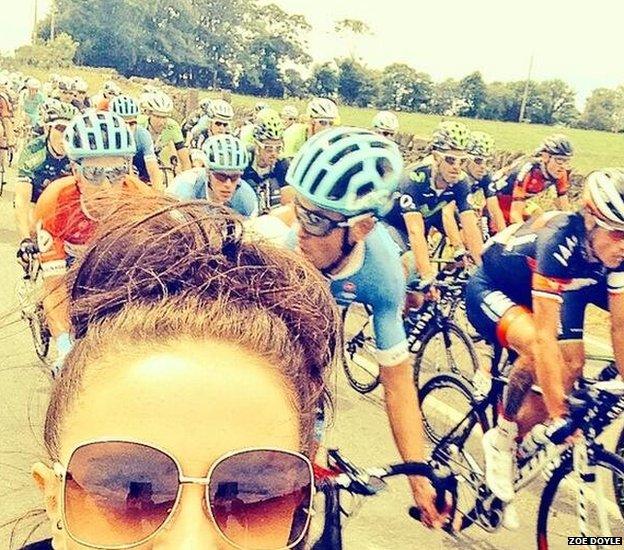
A dramatic selfie by Zoe Doyle
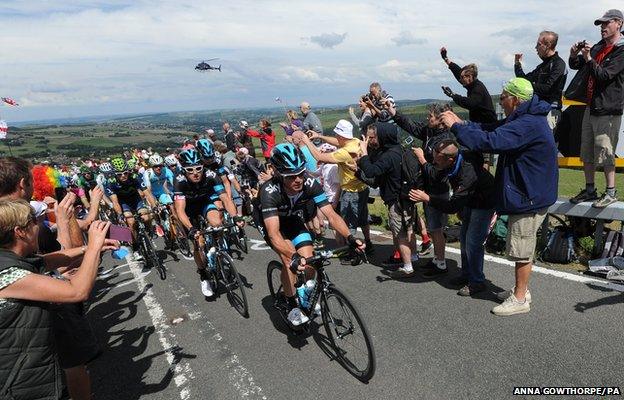
Team Sky is cheered along as stage two of the Tour de France passes over Holme Moss Moor, Yorkshire
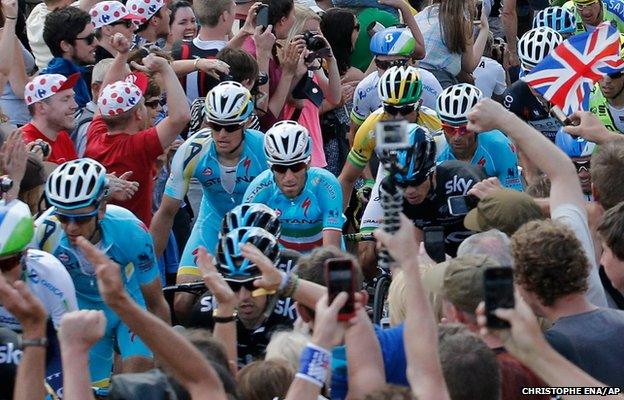
Stage winner and new overall leader Italy's Vincenzo Nibali (centre in blue shirt with the Italian flag on his jersey) climbs Bradfield
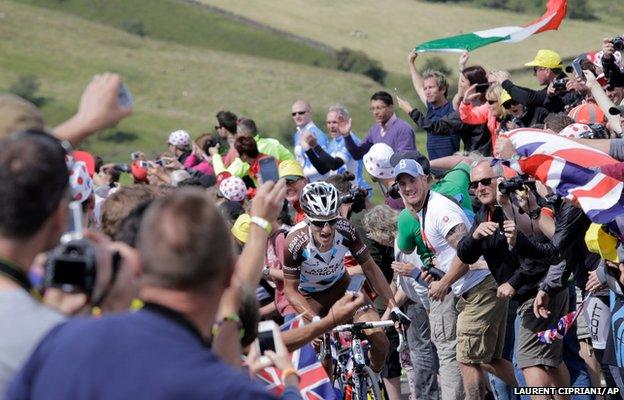
Spectators line the road as France's Blel Kadri climbs in the breakaway group during the second stage of the Tour de France